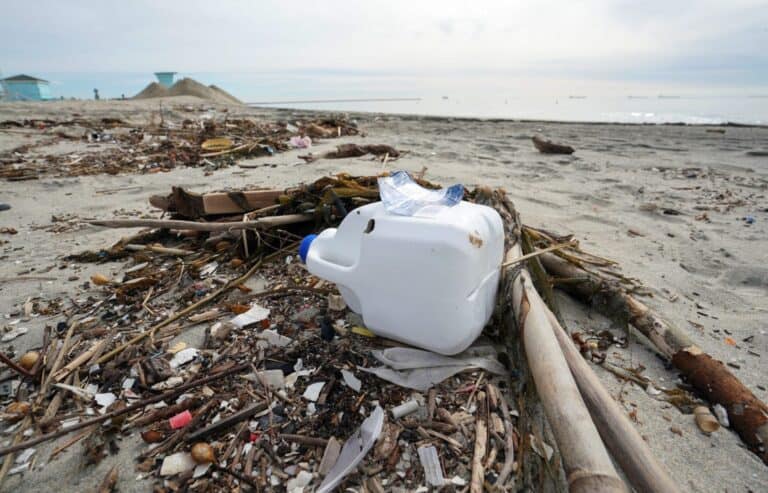Photo: Post storm debris made up mostly of plastics and vegetation is scattered across the high tide line in 2019. (Photo by Scott Varley, Daily Breeze/SCNG)
We don’t often think of plastics as having “fingerprints.” But they do. And, as we continue to find microparticles in unexpected places — from local anchovy and seabird guts to the deepest trenches of the ocean — identifying those fingerprints is increasingly important.
Scientists at the Monterey Bay Aquarium and MBARI recently published an open-access library — a collection anyone can use for free — of the chemical fingerprints of microplastics and other particles that are commonly found in and around the ocean. Researchers can use the library to figure out what kind of plastics are entering the ocean, where they are coming from and what we can do to keep them out in the future.
Scientists estimate that more than 11 million tons of plastic are dumped into the world’s oceans every year — the equivalent of dumping a garbage truck full of plastic into the ocean every minute.
Those plastics get weathered and eroded down into microparticles the size of the tip of a ballpoint pen or nearly-invisible fibers. They are ingested […]
Full article: Tracking microplastic ‘fingerprints’

